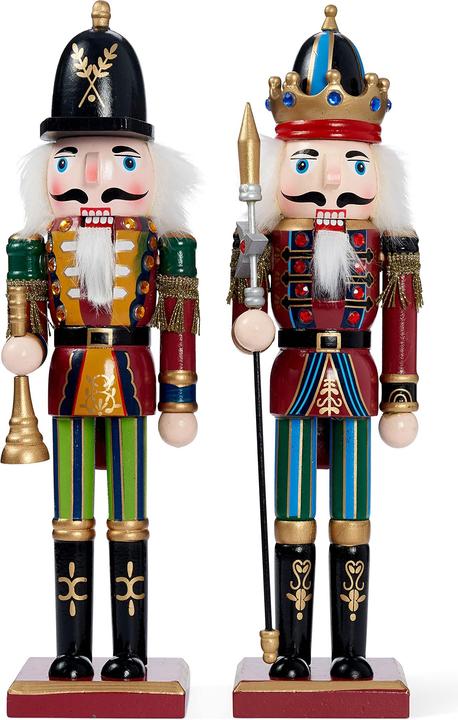

Where does the nutcracker actually come from?
Soldiers, kings, foresters: they all share a common destiny as nutcrackers. Find out how this came about in 1870 and why the wooden figures were supposed to crack nuts here.
Advent time is nutcracker time. But where does this uniformed wooden figure with a white beard and distinctive chin actually come from? And why does it flood Christmas markets and decorated living rooms? To find out, you need to take a look back in time - to the 19th century to be precise.
Originated in the Ore Mountains
The nutcracker in its current form is, so to speak, a Saxon. It comes from the Ore Mountains. In the 19th century, woodworking experienced a boom there after mining had lost its importance. The first wooden figure of its kind was turned in 1870 by the craftsman Friedrich Wilhelm Füchtner. F Füchtner was inspired by a book written in 1816, which created the first link between the wooden figure and Christmas: in "Nutcracker and Mouse King" by E.T.A. Hoffmann, a nutcracker is given to little Marie on Christmas Eve. Hoffmann's work thus served as the model for the first serialised nutcracker as we know it today. You can find the story to read and as an audiobook for children in the shop.
Cracking the poor man's hard nuts
It is no coincidence that nutcrackers traditionally depict soldiers, kings and people from the upper classes. These people, who were untouchable and uncriticisable in 1870, could stuff the mouths of the common people with their nuts.
The nutcracker not only symbolises rebellion against the authorities and is associated with Christmas. It also symbolises the battle between good and evil: In Hoffmann's work and in the well-known Christmas ballet "The Nutcracker", the kind wooden soldier stands his ground against the evil Mouse King.
More of a decorative piece
These days, the figures are more decoration than tools. It's more about what they embody. They are no good for breaking open bowls. So if you really want to crack a hard nut or two, you should use standard nut tongs. If you prefer something a little more specialised, I have picked out another product for you here. For example, the retro model from Rosenstein & Söhne, which is reminiscent of a workbench:
Cover photo: Shutterstock
Cat lady and coffee lover from up north. Always on the lookout for «News and Trends».
From the latest iPhone to the return of 80s fashion. The editorial team will help you make sense of it all.
Show all


